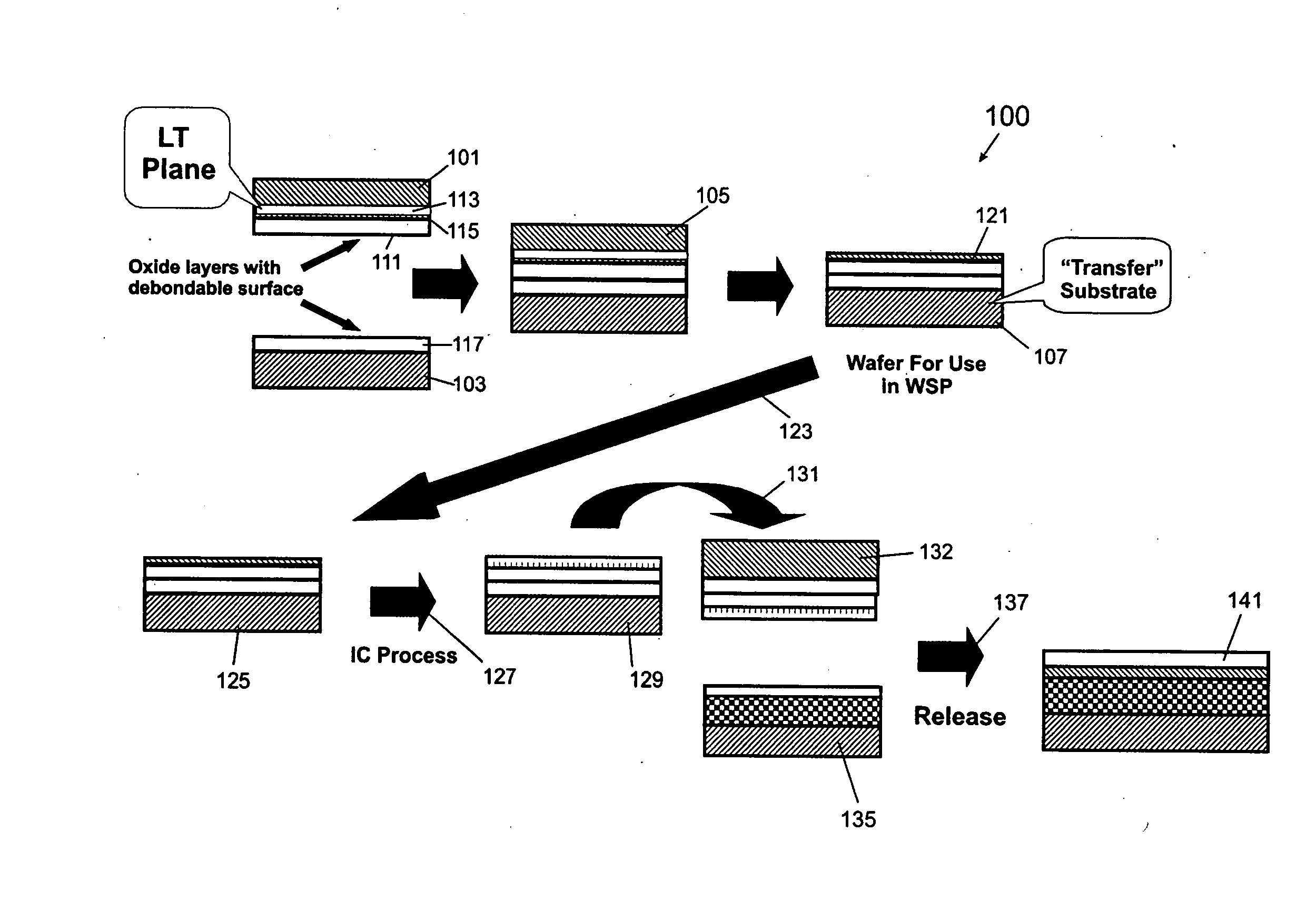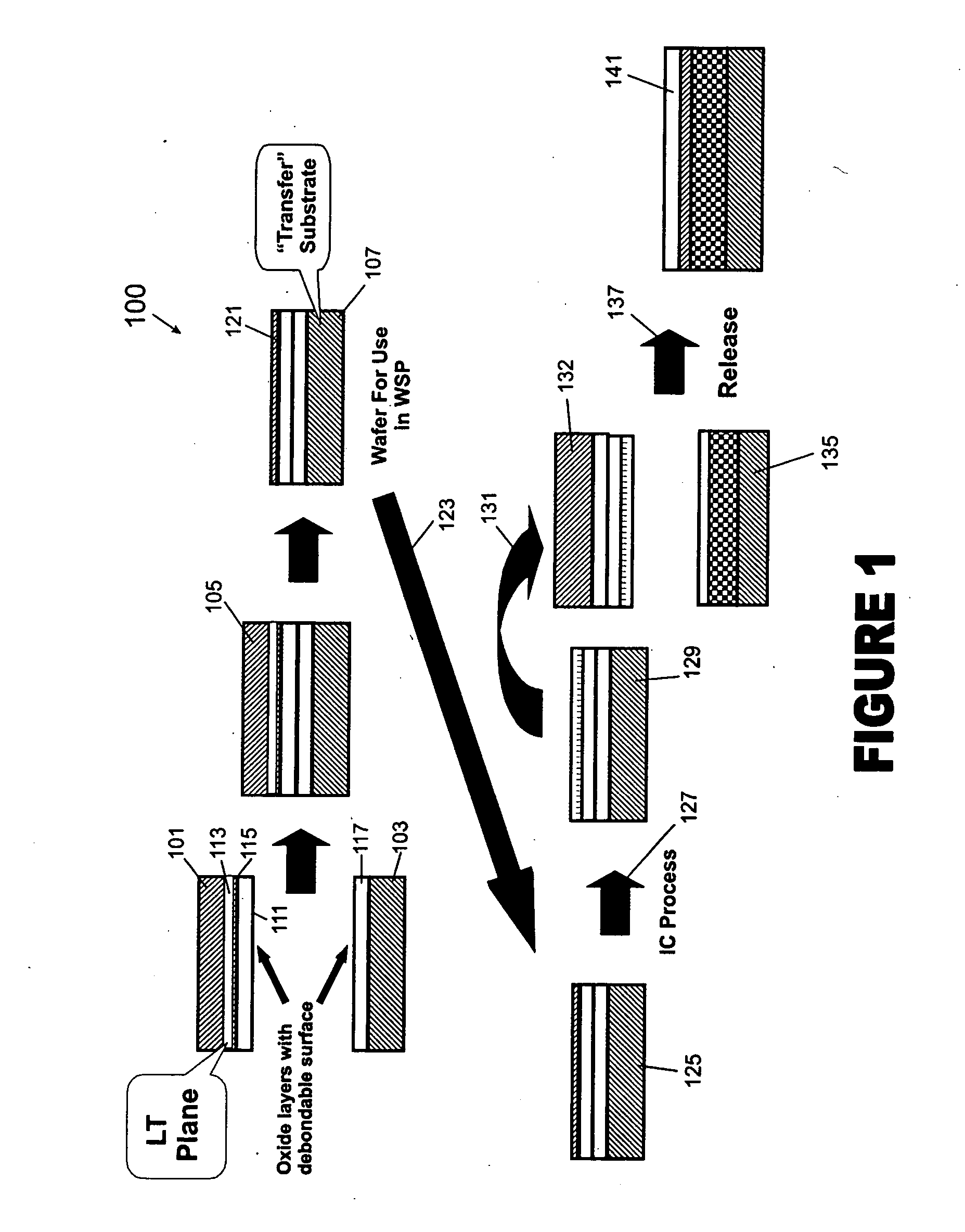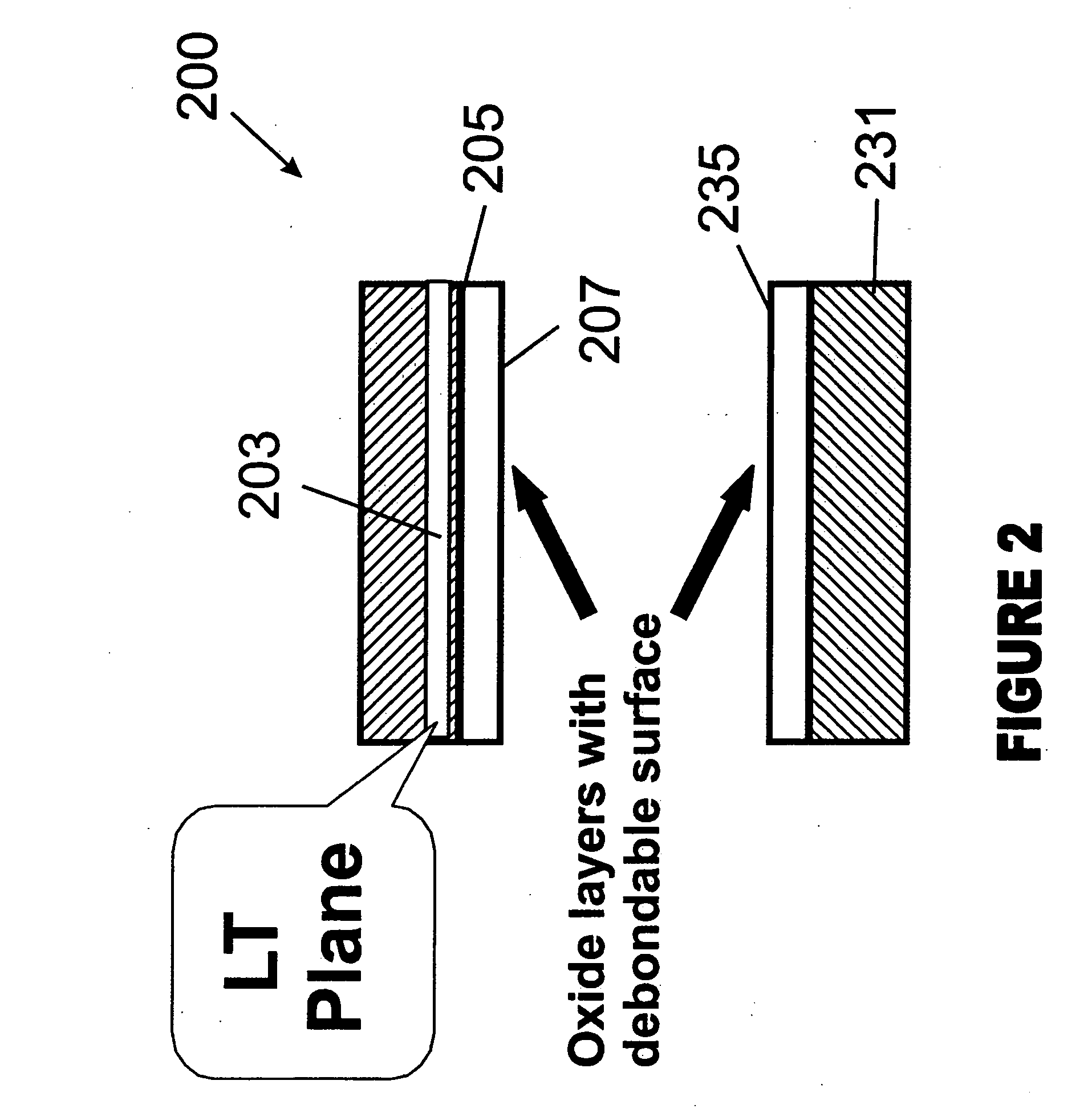Pre-made cleavable substrate method and structure of fabricating devices using one or more films provided by a layer transfer process
a technology of layer transfer and substrate, which is applied in the direction of semiconductor devices, electrical appliances, adhesives, etc., can solve the problems of brittle materials, difficult to separate or cut extremely hard materials, and often difficult to achieve the separation or cutting of extremely hard materials. , to achieve the effect of preventing the possibility of damage to the film or a remaining portion of the substrate and facilitating processing
- Summary
- Abstract
- Description
- Claims
- Application Information
AI Technical Summary
Benefits of technology
Problems solved by technology
Method used
Image
Examples
Embodiment Construction
[0020] According to the present invention, techniques related to the manufacture of substrates are provided. More particularly, the invention provides a technique including a method and a structure for forming multi-layered substrate structures for the fabrication of substrates for semiconductor integrated circuit devices using layer transfer techniques. But it will be recognized that the invention has a wider range of applicability; it can also be applied to other types of substrates for three-dimensional packaging (e.g., wafer scale) of integrated semiconductor devices, photonic devices, piezoelectronic devices, flat panel displays, microelectromechanical systems (“MEMS”), nano-technology structures, sensors, actuators, solar cells, biological and biomedical devices, and the like.
[0021] Referring to FIG. 1, a method 100 for fabricating integrated circuits on a layer transferred substrate according to embodiments of the present invention may be outlined as follows:
[0022] 1 Provid...
PUM
| Property | Measurement | Unit |
|---|---|---|
| temperature | aaaaa | aaaaa |
| surface roughness | aaaaa | aaaaa |
| temperature | aaaaa | aaaaa |
Abstract
Description
Claims
Application Information
 Login to View More
Login to View More - R&D
- Intellectual Property
- Life Sciences
- Materials
- Tech Scout
- Unparalleled Data Quality
- Higher Quality Content
- 60% Fewer Hallucinations
Browse by: Latest US Patents, China's latest patents, Technical Efficacy Thesaurus, Application Domain, Technology Topic, Popular Technical Reports.
© 2025 PatSnap. All rights reserved.Legal|Privacy policy|Modern Slavery Act Transparency Statement|Sitemap|About US| Contact US: help@patsnap.com



